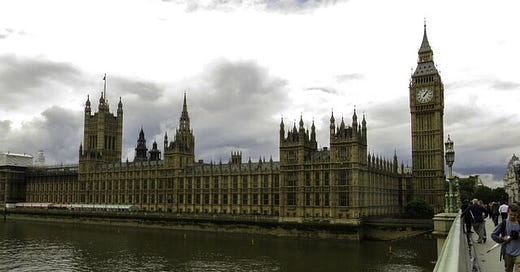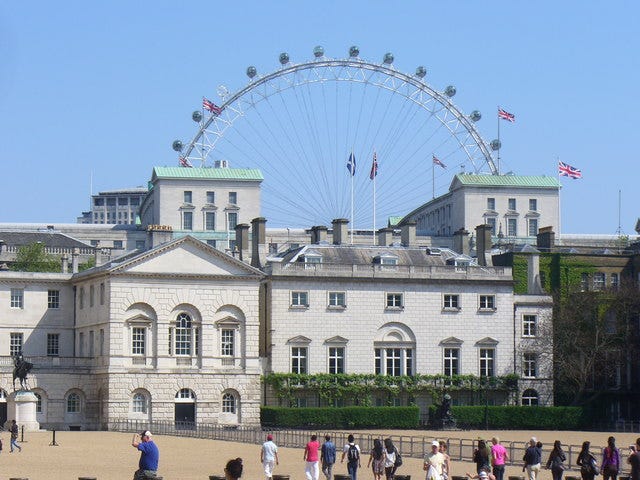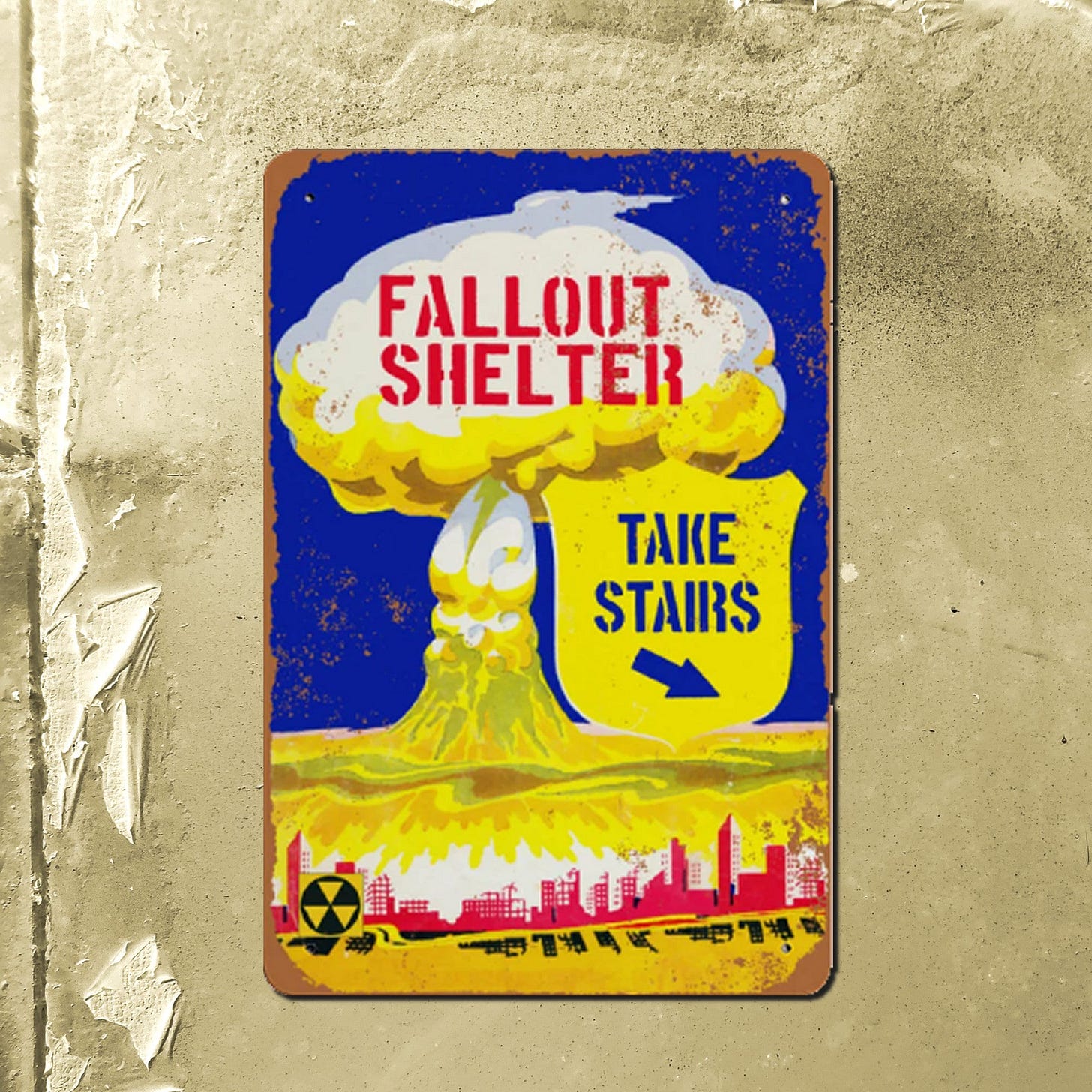If the worse should happen, rest assured (!) everyone who works here will be safely underground already (Steve Daniels/geograph)
Pindar.
Familiar with it?
Well I do hate to be the bringer of bad news but if you’ve never heard of it before now, then it’s unlikely your name is on the guest list.
Pindar is one of the UK government's most secretive underground bunkers, explicitely designed as a crisis command centre to be used in the event of war or a national emergency and located beneath the Ministry of Defence (MoD) building in Whitehall, an invisible statement to ensure continuity of government even in the most extreme circumstances-which, you won’t be surprised to learn, includes a nuclear attack on this country.
The construction of Pindar began during the first Cold War and was completed in the early 1990s. It was built to withstand just about anything other than the most direct of nuclear blasts (contrary to popular belief, nuclear warheads don’t detonate upon impact with the ground but whilst they are in the process of flying towards their target),and other catastrophic events (eg) another tour by Taylor Swift, making it one of the most secure locations in the country.
The MoD’s ‘above ground’ HQ in Horse Guards. In the manner of an iceberg it will have many more stories sunk deeply and extremely securely below ground (Colin Smith/geograph)
The facility has an independent power and water supply, along with advanced communications systems that allow secure contact with military, intelligence, and government networks both in the UK and abroad.
Pindar is maintained in a constant state of readiness and designed to be used by senior government officials, including the Prime Minister, high-ranking military officers, and emergency response coordinators, in the event of said national crisis, holding a simjilar role and responsibility to the US Presidential Emergency Operations Center (PEOC) and the Russian Tagansky Protected Command Point.
I know. They are aware of where ours is, we are aware of where theirs are so, quite why anyone has bothered in the first place is beyond me.
But little boys and their big toys and all that….
Pindar’s exact features are classified but it is speculated to include a war room, briefing areas, and advanced digital infrastructure to assist with and coordinate military and security responses. Reports suggest that it has been activated during key national security events, including the 7/7 London bombings and any aqd all potential terrorist attacks and threats that have taken place since then, as well as unprecedented natural disasters
Despite being one of the UK's most secure facilities, there have been reports of logistical challenges, including serious connectivity issues with external agencies in its early years. However, ongoing upgrades and modernisation efforts are likely to have enhanced its effectiveness as a command centre and it is therefore probable that they’ll be upgrading their internal operating systems from Windows 95 anytime now.
Because of its secrecy, there are many theories about Pindar, ranging from speculation about additional hidden tunnels connecting it to other government bunkers to claims that it could serve as a post-disaster refuge for senior leaders. However, most of its true capabilities remain unknown to the public, reinforcing its status as one of the UK’s most classified sites.
For the statistically driven amongst you, Pindar became fully operational in 1992 (at a time when relations between NATO and the former USSR were bordering on the cordial, so much so that there was talk of Boris Yeltsin’s Russian Federation being asked if it would be interested in joining the former), and cost £126.3m to build, with it’s official designation described as a "protected crisis management facility"…
No comment! (Etsy)
…which is not unlike describing a paperclip as “a modular, metallic-based document cohesion facilitator” or a bottle of Tipex as “a transformative documentary revision fluid engineered to facilitate the post-inscription rectification of textual inaccuracies within manually produced scriptorial compositions” -but then regular readers of this blog will already know just how much the MoD is fond of unneccessary wordplay!
The bunker comes equipped with a broadcasting studio* with accommodation to house its inhabitants who work a permanent three shift cycle-though quite how and who they would broadcast to, post-armageddon, is another story.
For a top secret location, it is, perhaps, darkly amusing to learn that its entrance within the MOD building (see photo) is allegedly signposted "To Bomb Shelter Area" and that, with reference to ultimately finding your way out of the warren rather than fighting your way in, there are a variety of routes available which would enable the occupants to escape from the facility in the event that the MoD building above it had collapsed-meaning if that building did indeed collapse, then it would immediately provide an extra shield for the bunker below from radiation.
Thus Pindar stands as the UK's post-apocalyptic VIP lounge, complete with all the bells and whistles you'd expect—secure communications, secret tunnels, and a broadcast studio for your post-meltdown radio show. Because, when the world ends, who wouldn’t want a government official discussing crisis management over a cup of tea?
After all, nothing says "survival" like being equipped to chat about the end of civilisation while the rest of us are stuck outside, trying to remember where we left the tin opener…
*A since released document on how the country might respond to an impending nuclear attack revealed that the BBC would, amongst other delights, show every single episode of EastEnders ever made back to back on a designated channel.






